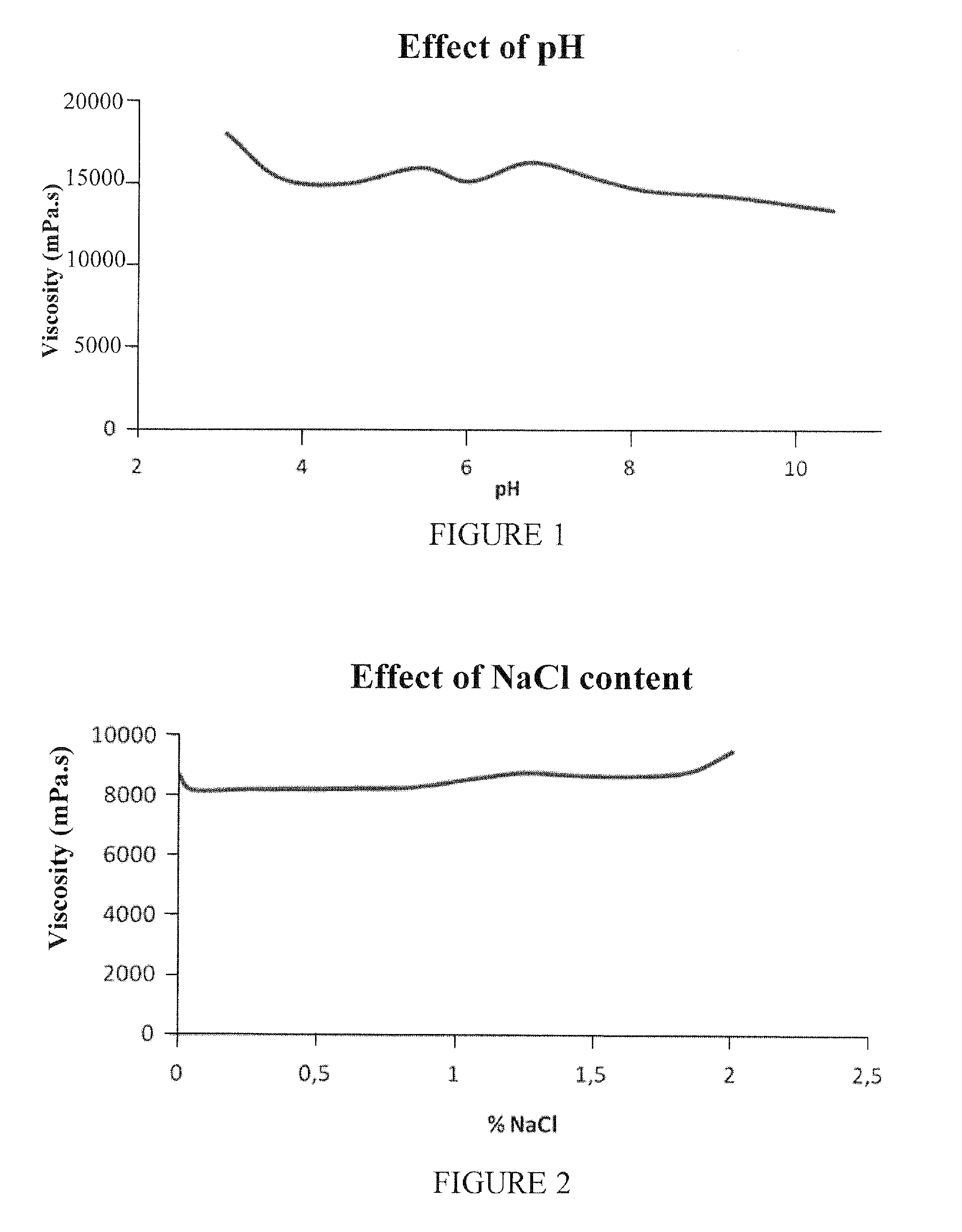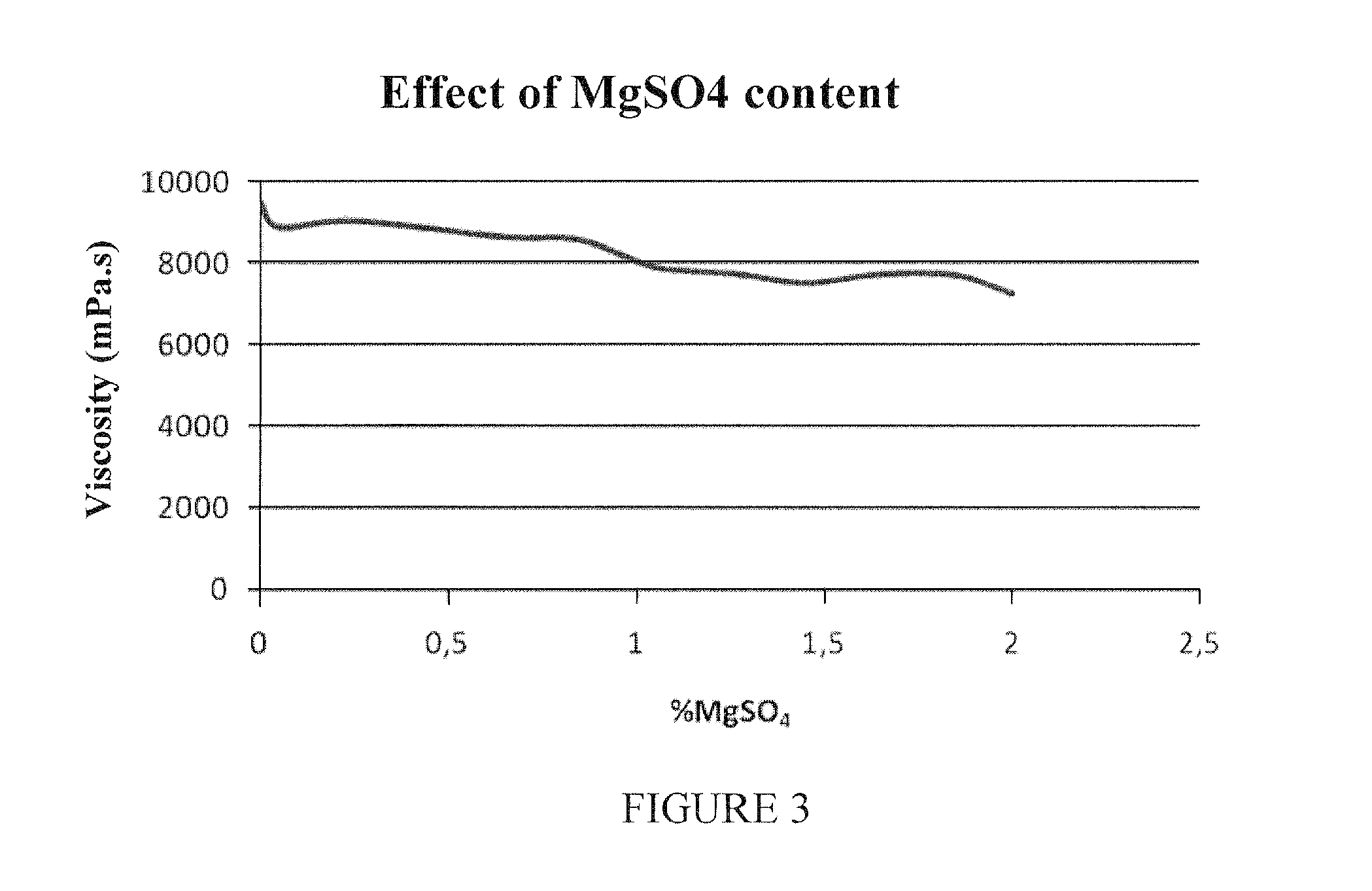Cosmetic and dermatologic composition and uses thereof
a technology of cosmetics and compositions, applied in the field of cosmetics and dermatologic compositions, can solve the problems of gels having little interest in cosmetics, molecule tangle, and hindering the movement of water,
- Summary
- Abstract
- Description
- Claims
- Application Information
AI Technical Summary
Benefits of technology
Problems solved by technology
Method used
Image
Examples
example 1
Sensory Study No. 1
[0059]Sensory testing was carried out under conditions conforming to V09-105 norms.
[0060]Twelve experts each evaluated three products during the same session using preestablished product-references and scales, in individual, independent tests.
[0061]The scale comprised values from 0 to 10. The value 0 corresponds to the absence of this descriptor in the product. The value 10 corresponds to the maximum value of this descriptor in the product.
[0062]In addition to the composition such as described in the table at 1% (by weight), the test products comprised 0.5% Dekaben C (preservative) and purified water (QSP 100%).
[0063]Furthermore, the composition (added at 1%) contained
[0064]35% sclerotium gum
[0065]15% xanthan gum
[0066]50% lecithin
[0067]and optionally 10% pullulan or fructan.
[0068]Each panelist entered his results which were then analyzed to determine if there was a difference between products with regard to the parameters tested. These results are presented in the...
example 2
Sensory Study No. 2
[0069]Sensory testing was carried out under conditions conforming to V09-105 norms.
[0070]Twenty experts each evaluated two products during the same session using preestablished product-references and scales, in individual, independent tests.
[0071]The scale comprised values from 0 to 10. The value 0 corresponds to the absence of this descriptor in the product. The value 10 corresponds to the maximum value of this descriptor in the product
[0072]Each panelist entered his results which were then analyzed to determine if there was a difference between products with regard to the parameters tested. These results are presented in the following table.
Test No.45WaterWater 0.15%CompositionCarbopolas perETDexample 12020 0.5%at 1%Dekaben C0.5%NaOH qspCompositionDekaben CpH 5.5DifferenceShiny6.106.60No difference betweentestsSlippery8.357.35No difference betweentestsWhitening0.000.00No difference betweentestsSpreadability8.808.75No difference betweentestsTackiness2.501.30No di...
example 3
Effect of pH and Electrolytes on Viscosity
[0073]FIGS. 1-3 illustrate the effect of variations in pH or addition of mono- or divalent electrolytes on solutions containing 2% of a composition such as described in example 1. Viscosity was measured at room temperature with a viscometer (Rheo ELV8, spindle 4, 6 rpm, 3 minutes). pH and addition of mono- or divalent electrolytes had little effect on the viscosity of the solutions.
PUM
| Property | Measurement | Unit |
|---|---|---|
| apparent viscosity | aaaaa | aaaaa |
| temperature | aaaaa | aaaaa |
| temperature | aaaaa | aaaaa |
Abstract
Description
Claims
Application Information
 Login to View More
Login to View More - R&D
- Intellectual Property
- Life Sciences
- Materials
- Tech Scout
- Unparalleled Data Quality
- Higher Quality Content
- 60% Fewer Hallucinations
Browse by: Latest US Patents, China's latest patents, Technical Efficacy Thesaurus, Application Domain, Technology Topic, Popular Technical Reports.
© 2025 PatSnap. All rights reserved.Legal|Privacy policy|Modern Slavery Act Transparency Statement|Sitemap|About US| Contact US: help@patsnap.com


